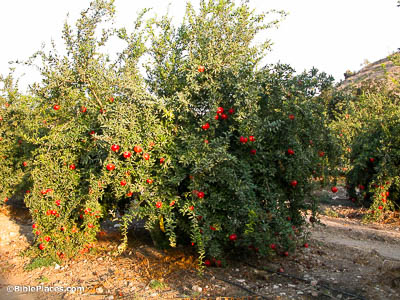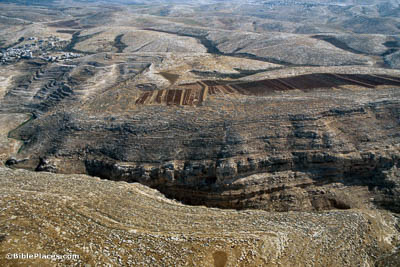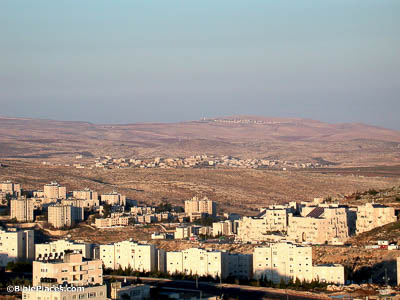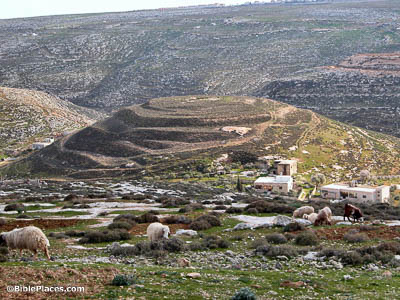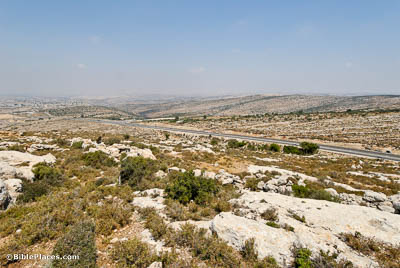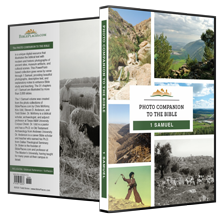Saul was sitting under the pomegranate tree which is in Migron, on the outskirts of Gibeah (14:2).
The pomegranate tree near Gibeah was apparently known as a local landmark. Although pomegranate trees can reach 30 feet (9 m) in height, they more are more commonly between 12 and 16 feet tall (3.6–4.9 m). In the right conditions, these trees can live over 200 years, although most fruit production takes place within the first 15 years.
